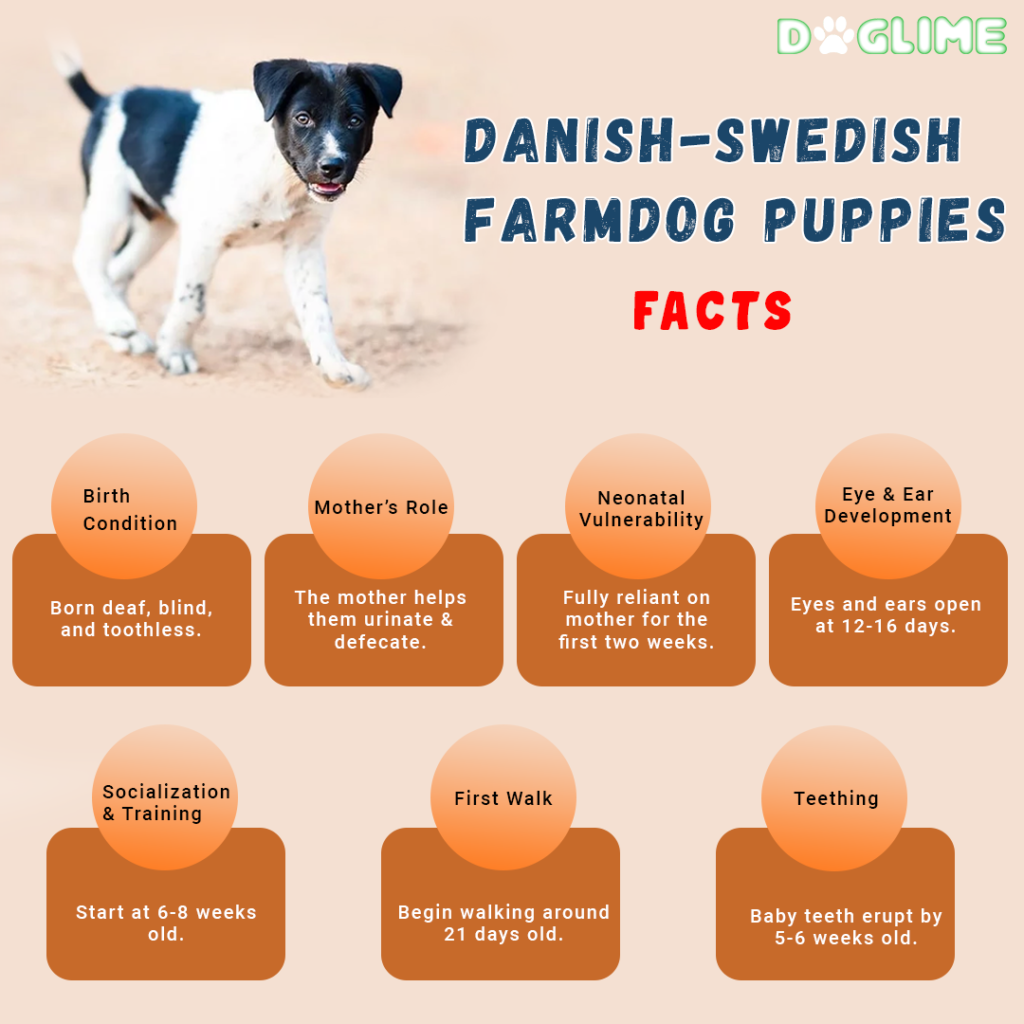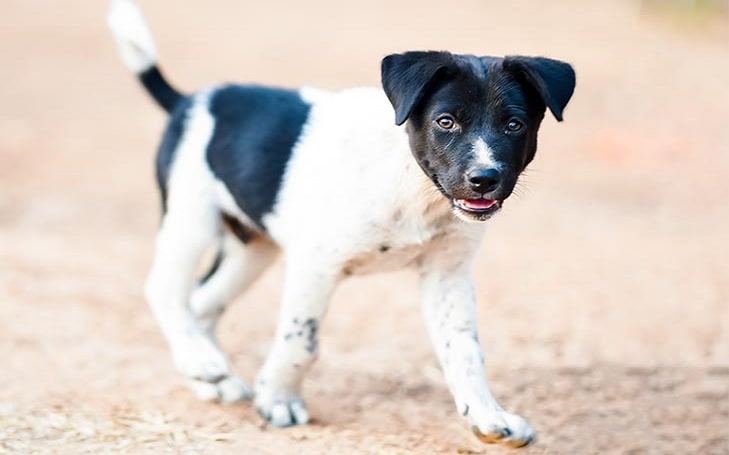Danish-Swedish Farmdog Puppies
The Danish-Swedish Farmdog was bred as a hunting and guarding dog. Today they are kept as a family companion due to their loving, friendly, and loyal nature. They do well with small kids as well due to their gentle and sweet nature. It does well with an owner who can train this breed with firm and consistent leadership.
This breed can give birth to 4-6 puppies at a time. Their development and behavior during different months from birth to adulthood are interesting to watch. In this article, you will learn about the Danish-Swedish Farmdog puppy’s development stages and their behavior in different months.
Newborn
The Danish-Swedish Farmdog is born deaf, blind, and toothless as it takes some time to develop. Till then the mother takes care of all the necessities of the puppies. The puppies cannot urinate or defecate on their own, so the mother helps them by licking the belly which stimulates them to pee and poop.

The puppies need a good amount of sleep by which I mean about 90% of sleep a day. Keep them in a cozy place where they could sleep with the warmth of their mother. The puppies should not be separated from the mother for a long period of time, as they cannot produce their own body heat and might die of hypothermia.
Neonatal Stage (0-2 Weeks)
The neonatal stage is the first two weeks of the Danish-Swedish Farmdog puppy’s birth. This is one of the vulnerable periods of the puppy’s life where they have to rely fully on the care of the mother. The mother nurses the puppies and clean them frequently. Do not bathe the puppies during this stage and leave all the cleaning and feeding to the bitch while you only check if she is doing it right.
With enough sleep and proper nursing, the puppies get double the size of birth in two weeks. Do not feed them formula milk unless the mother cannot feed them due to some reason. The mother’s milk contains colostrum which is rich in antibodies and it helps to keep the puppies safe from many health problems.
Transitional Stage (2-4 Weeks)
You can see a lot of changes in your Danish-Swedish Farmdog puppy’s body and behavior during the transitional stage. The sealed eyes and ears from birth slowly start to open in 12-16 days. Their visions are still blurry which takes some weeks to be clear. They now can know how the mother and other littermates looks and sound.

Image Source: Pinterest-@Dorthe Ruff Eriksen
The puppies take their first walk by 21 days of their birth. They start to walk, play with their littermates and also make different noises to communicate with each other. The mother teaches them about the environment and canine world. Puppies also learn to control their bladder and do not need stimulation from the mother to pee and potty.
Socialization Stage (4-12 Weeks)
The baby teeth begin to erupt and the Danish-Swedish Farmdog has all sets of baby teeth by the age of 5-6 weeks. Now they start sampling solid food from the bowl of the mother while the mother begins to produce less milk. The puppy also now learns to bark for the first time. You can also see them chewing a lot due to the itch in their teeth. So, invest in some chewable toys to make them get relief from the itchiness of the teeth.
Socialization should be started when the puppy reach 7-8 weeks old. Expose them to the outside world and introduce them with different people and dogs. It will make them be comfortable around people and not be scared of them while taking them out.
It is also a perfect time to start basic training for your Danish-Swedish Farmdog puppy. They are very smart and can easily soak up commands thrown at them. So, start with basic commands and small tricks when they reach 6-8 weeks.
Juvenile Stage (3-6 Months)
The juvenile stage is a period where the puppy has lots of energy on their body and sometimes it becomes difficult to control them. So the training is important to make them obedient and attentive. The Danish-Swedish Farmdog puppy also loses their baby faces slowly and starts looking more like an adult.

Image Source: Reddit
Involve the puppy in different types of physical as well as mental activities to utilize their energy and stimulate their mind. Feed the puppy 3 meals a day and go for a high-quality puppy food that contains the nutrition requires for the puppy of a certain age.
Adolescence Stage (6-12 Months)
The puppy reaches sexual maturity at the age of 6 months where the female has her first heat and the male dog starts to show interest in females. It is not the right age to start breeding as they are not fully matured physically and mentally. So wait till the Danish-Swedish Farmdog gets 16-18 months old.
It is also time to switch their puppy food to premium adult dog food. Go for a high-quality dog food that has all the nutritions and ingredients needed for your dog. Give them advance training like agility and other dog sports as they reach 6 months old.

Image Source: Academichound.com
Vaccination Chart For Danish-Swedish Farmdog
| 6 to 8 Weeks | Distemper, parvovirus |
| 10 to 12 Weeks | DHPP (vaccines for distemper, adenovirus, parainfluenza, and parvovirus) |
| 16 to 18 Weeks | DHPP, rabies |
| Every 1 to 2 Years | DHPP |
| Every 1 to 3 Years | Rabies (as required by law) |
Vaccination Cost
The cost of vaccine for DDHP is between $75-$100 and for the rabies is between $15-$20.
Visit Doglime for more dog breed information and their puppy’s developmental stages.
Tags










